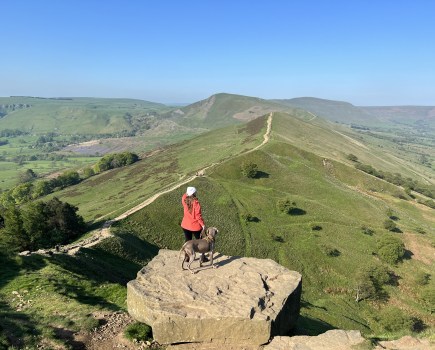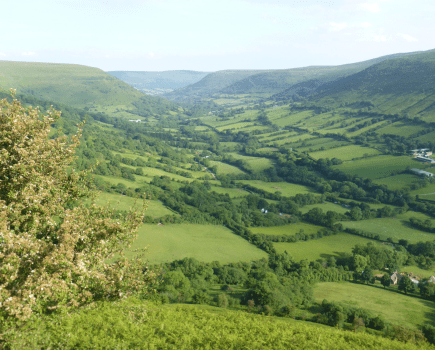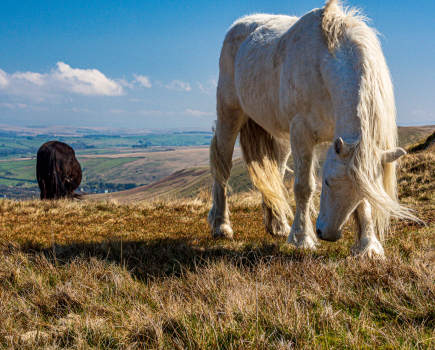
Margaux Smale finds ring-necked parakeets, tropical vegetation and historical breweries as she explores the Thames.
I never thought I could learn so much about London’s history and natural habitat in one day, but six hours and 258 photographs later I had discovered several pre-1800 buildings, a 200-year-old brewery and a colony of ring-necked parakeets. Although a relatively long walk, this 12-mile stretch of the Thames offers plenty of wonderful pubs, restaurants and cafés. But don’t be tempted by Teddington’s multitude of tantalising eateries. Hold on until you reach Richmond Bridge, for there lies the warm and friendly Tide Tables Café, tucked away underneath one of the arches of the bridge.
The beginning of the walk will take you past the largest system of locks on the Thames, some pretty woodland, and Ham Lands nature reserve. Although rather bare when I walked the path in early spring, the trees and bushes were all too ready to push out their green leaves after a very long winter.
The Thames is home to a number of delightful birds and creatures, some less common than others. Patience is a virtue, and if you’re quiet you may spot a Eurasian jay, a ring-necked parakeet, a great crested grebe, or a kingfisher. It’s worth sitting by the river for a while, as the blue and orange birds are more common than you might think. The green parakeets, however, hail from southern Asia. The Richmond population are escapees from aviaries, though legend would have you believe they came from the Shepperton film set of The African Queen in 1951. The thinner pre-spring foliage affords you a better chance of seeing these unusual creatures.
Wandering along the path can feel surprisingly rural at times, making you forget you’re in London. However, I was warned to take care when walking on my own, particularly along the stretch between Richmond Bridge and the Kew Gardens car park, as it is quite remote. Kew Gardens, or to use its proper name, the Royal Botanic Gardens, is conveniently located at the halfway mark of this walk. These beautifully historic gardens house the world’s largest collection of living plants and are certainly worth a visit, although to take full advantage of the gardens’ 121 hectares (and to justify the entrance fee), you might want to come back another day. Be sure to visit the Treetop Walkway from where you get a great view of the well-manicured gardens.
The stretch after Kew Gardens is one of the greenest and most beautiful lengths along the Thames Path. The route is dotted with quaint houses, while the bridges are of equal beauty and historical interest. The elegant Chiswick Bridge (although built in 1933) reflects the style of 18th century bridges and the stunning Hammersmith Bridge, built in 1887 to a design by the great engineer Joseph Bazalgette, are just two examples.
The path is popular with runners, cyclists and dog walkers, and as the evening draws in, you may also catch the odd rower on the water. On reaching Putney, there are a number of welcoming pubs along the Embankment to ease your aching feet and enjoy a well-earned pint. It certainly is a well maintained route and I look forward to exploring more of the Thames Path.
ROUTE DESCRIPTION
- From Teddington station, take the Platform 2 exit and turn L down Station Road. At the end turn R and follow the High Street to the river.
- Cross over the two-part footbridge to the south side of the river and follow the path L.
- Follow the path along the river. Around Richmond Hill the path is liable to flood at high tide, so take care.
- Should you choose to visit Kew Gardens, the Brentford Gate is accessible via the car park which lies opposite the junction with the Grand Canal on the other side.
- Around the Budweiser Brewery, the river can force walkers inland at high tide, but by following the parallel Mortlake High Street, you’ll soon be able to rejoin the path.
- Turn R up Putney High Street for Putney station or cross Putney Bridge for Putney Bridge underground station.

Margaux Smale finds ring-necked parakeets, tropical vegetation and historical breweries as she explores the Thames.
I never thought I could learn so much about London’s history and natural habitat in one day, but six hours and 258 photographs later I had discovered several pre-1800 buildings, a 200-year-old brewery and a colony of ring-necked parakeets. Although a relatively long walk, this 12-mile stretch of the Thames offers plenty of wonderful pubs, restaurants and cafés. But don’t be tempted by Teddington’s multitude of tantalising eateries. Hold on until you reach Richmond Bridge, for there lies the warm and friendly Tide Tables Café, tucked away underneath one of the arches of the bridge.
The beginning of the walk will take you past the largest system of locks on the Thames, some pretty woodland, and Ham Lands nature reserve. Although rather bare when I walked the path in early spring, the trees and bushes were all too ready to push out their green leaves after a very long winter.
The Thames is home to a number of delightful birds and creatures, some less common than others. Patience is a virtue, and if you’re quiet you may spot a Eurasian jay, a ring-necked parakeet, a great crested grebe, or a kingfisher. It’s worth sitting by the river for a while, as the blue and orange birds are more common than you might think. The green parakeets, however, hail from southern Asia. The Richmond population are escapees from aviaries, though legend would have you believe they came from the Shepperton film set of The African Queen in 1951. The thinner pre-spring foliage affords you a better chance of seeing these unusual creatures.
Wandering along the path can feel surprisingly rural at times, making you forget you’re in London. However, I was warned to take care when walking on my own, particularly along the stretch between Richmond Bridge and the Kew Gardens car park, as it is quite remote. Kew Gardens, or to use its proper name, the Royal Botanic Gardens, is conveniently located at the halfway mark of this walk. These beautifully historic gardens house the world’s largest collection of living plants and are certainly worth a visit, although to take full advantage of the gardens’ 121 hectares (and to justify the entrance fee), you might want to come back another day. Be sure to visit the Treetop Walkway from where you get a great view of the well-manicured gardens.
The stretch after Kew Gardens is one of the greenest and most beautiful lengths along the Thames Path. The route is dotted with quaint houses, while the bridges are of equal beauty and historical interest. The elegant Chiswick Bridge (although built in 1933) reflects the style of 18th century bridges and the stunning Hammersmith Bridge, built in 1887 to a design by the great engineer Joseph Bazalgette, are just two examples.
The path is popular with runners, cyclists and dog walkers, and as the evening draws in, you may also catch the odd rower on the water. On reaching Putney, there are a number of welcoming pubs along the Embankment to ease your aching feet and enjoy a well-earned pint. It certainly is a well maintained route and I look forward to exploring more of the Thames Path.
ROUTE DESCRIPTION
- From Teddington station, take the Platform 2 exit and turn L down Station Road. At the end turn R and follow the High Street to the river.
- Cross over the two-part footbridge to the south side of the river and follow the path L.
- Follow the path along the river. Around Richmond Hill the path is liable to flood at high tide, so take care.
- Should you choose to visit Kew Gardens, the Brentford Gate is accessible via the car park which lies opposite the junction with the Grand Canal on the other side.
- Around the Budweiser Brewery, the river can force walkers inland at high tide, but by following the parallel Mortlake High Street, you’ll soon be able to rejoin the path.
- Turn R up Putney High Street for Putney station or cross Putney Bridge for Putney Bridge underground station.







